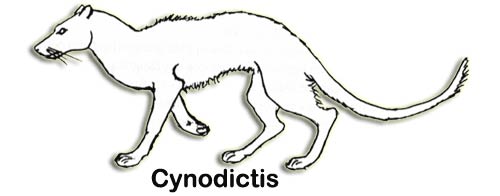How Much is that Doggie in the Window?
March 4, 2008
I think most people would be shocked when they add up the expenses and the time involved in dog ownership. I find myself actively discouraging people from adopting dogs without first getting a real sense of how much time and money is involved.
Potential owners who underestimate the cost and time inevitably wind up with under-exercised, under-trained dogs who, naturally enough, exhibit behavioral problems (excessive barking, destructive chewing, inappropriate elimination habits) and then wind up abandoned or in shelters.
A recent posting on the Fosters & Smith Pet Education site details the expenses involved over the life of a 50 pound dog over 14 years in the Midwest. The low number? $4,242.00. The middle number, which I consider to be closest to the true average cost? $12,468.00. The high end number? $38,905.00.
Surprised? Then you should read the entire article, here.
These totals are pretty shocking aren’t they? And remember, this is the cost for a 50-pound dog that lives in the Midwest. It is not uncommon to see some of these numbers double or triple in places like New York, Los Angeles, Miami, and Dallas. Now granted most people do not end up spending $40,000 on their dog, but some spend a whole lot more. A dog with hip dysplasia or severe allergies can have significantly higher veterinary expenses and I routinely see people who spend over $2,000 on a single veterinary problem. Chances are your costs will be similar to those I incur, but even with the minimum required care, it is still over $13,000.00.
Alien Intelligence: UFOs or Dogs?
February 15, 2008
According to a poll reported in the New York Times in 2003, there are three million Americans who believe they have had some kind of encounter with an alien.
My opinion is that if Americans wanted to have an encounter with an alien intelligence they probably have one sleeping on a rug right in their own home. I submit that the family dog possesses a mind that is is at least as alien to most dog owners as any “grey” with huge black almond-shaped eyes and an unsettling tendency to probe human orifices.
My interest is to explore the canine mind and leave the extraterrestrial brain to the province of science fiction and needy fantasists.
People who claim they’ve met aliens, been aboard their space craft or given birth to alien-human hybrid babies are 1.) suffering from a delusion and 2.) have no understanding of the size of the universe.
How can I so easily dismiss the multitude of reports by millions of otherwise sane and sober folks? Let’s take a look at how big a place this universe is anyway.
Physics tells us that it is impossible to achieve speeds greater than that of light itself. The commonly used denominator light year is defined as the distance light travels in one Earth year, approximately 6 trillion miles. Let’s assume that we could actually build a ship capable of sustaining life that matches the speed of light.
Leaving Earth we pass the Moon in 1 1/2 seconds. Venus flies by us in 2 1/2 minutes. The recently down-graded Pluto would take us 5 1/2 hours. So far so good. It will now take us several months at this speed to leave behind the gravitational influence of the Sun and escape our solar system. To get to the closest star, Proxima Centauri we’ve got to travel for more than four years.
Here comes the problem. To get to the center of our own galaxy, one of billions observable by the Hubble Space Telescope, will take us 25,000 years. To get to the outer edge of the Milky Way requires 50,000 years at the speed of light. Wait, it gets worse. The closest galaxy to us is Andromeda. To get there we’d need to travel for 2.5 million years.
The farthest objects we can see with the HST would require a journey of 12 billion years. For comparison the age of the universe is currently believed to be 14.8 billion years.
So while the odds certainly favor the possibility of intelligent life out there among the stars, the distances between us and them are almost incomprehensibly vast. Which makes the thousands of reports of alien ships seen or boarded since 1947 seem highly unlikely. Instead, E.T., the greys and the rest of the intergalactic menagerie come from that universe between our ears, the human brain, than from the one we see when we gaze into the night sky.
In future posts we’ll explore the genuine mysteries and complexities of the canine mind; the alien at our feet.
Source: Hubble: the Mirror on the Universe, Robin Kerrod & Carole Stott, Firefly Books, 2007. (Above) A cluster of galaxies 2.2 billion light years from Earth. Photo from Space.com, the Best Hubble Images,
In Search of Memory by Eric R. Kandel
February 5, 2008
I’ve been fascinated by memory since, oh, I can’t remember when. One of the best books on the subject I’ve ever read was Daniel Schacter’s Searching for Memory: The Brain, the Mind, and the Past from 1997. I would still recommend that book as a great place to start exploring this field. The sad truth is that the primary way in which researchers learn about memory is by studying people who for various reasons have memory deficits. Their personal stories can be heartbreaking, aside from the scientific information we can glean from their tragic situations.
Now, a decade later there’s another phenomenal book that deals with the discovery of the molecular basis for memory by Eric Kandel, In Search of Memory. Everything that make you, YOU is tied into memory: personality, emotions, skills, our likes and dislikes. Without that continuous chain of memory that stretches back to our infancy how could we know who we are, what we are capable of?
And don’t be afraid that this is one dense slog through a lot of mind-numbing statistics, experiments and discoveries. Kandel’s book is filled with hot sex, Hollywood orgies, porn stars, suburban exhibitionism and perverse, though intriguing, variations on intercourse.
OK, that last part I made up.
But don’t let the lack of sensationalism deter you. This is essential reading if you want to know how your mind works.
Kandel, who received the Nobel Prize in 2000, traces advances in understanding learning and memory. His own groundbreaking findings showed that learning produces changes in behavior by modifying the strength of connections between nerve cells. He conveys his immense grasp of the science beautifully, but it is his personal recollections that make the book especially compelling. He begins with his searing childhood memories of the German annexation of Austria and his family’s escape to the U.S. when he was nine. And he ends with a conference he organized in Vienna to examine the strange reluctance of Austria (unlike Germany) to acknowledge its role in the Holocaust. One comes away in awe of the scientific advances—and of a life well and fully lived.
–from Scientific American
Descendants of Wolves
February 2, 2008
Professor Robert Wayne of the University of California plus and eight-person research team. Took mitochondrial DNA samples from 162 wolves and 140 dogs North America, Europe, Asia and the Arabian peninsula. Mitochondrial DNA is inherited from mother to child. It is especially suited to analyze genetic lines that result from mutation over long periods. Dog and wolf DNA differ by only 12 mutations; dogs and jackals and prairie wolves differ in 22 places. This proves that contemporary dogs are descended from wolves exclusively. The split between dogs and wolves occurred around 135,000 years ago, about the same time as our own species appeared, Homo sapiens. However canine varieties that had a skeletal structure different form wolves show up around 14,000 to 20,000 years ago. The belief today is that the pre-canine ‘tame’ wolves differed at first only behaviorally from their counterparts in the wild.
– from If Dogs Could Talk; Exploring the Canine Mind by Vilmos Csányi, translated by Richard E. Quandt, North Point Press, Farrar, Straus and Giroux, New York, NY, 2005. Originally published in 2000 by Vince Kiadó Kft., Hungary
How is your Dog’s Mind Activated?
February 2, 2008
“I believe that it is characteristic of the minds of dogs that they can think only about something that we activate in their minds: a ball, a leash, a few words, and the dog’s mind goes to work full steam. If everybody is busy with something else, the dog lies down, snoozes, and its mind just flickers at its lowest setting. I believe that dogs have taken the first step towards a more enduring wakefulness, and this is underscored by the fact that they easily learn rituals, because the elements of rituals assist in the activation of the mind. They have also developed a keen sense of time and it is easy to teach them a ritual that has to be carried out at a particular time.”
— from If Dogs Could Talk; Exploring the Canine Mind by Vilmos Csányi, translated by Richard E. Quandt, North Point Press, Farrar, Straus and Giroux, New York, NY, 2005. Originally published in 2000 by Vince Kiadó Kft., Hungary
Maurice Maeterlinck on dogs
February 2, 2008
“Amid all the forms of life that surround us, not a single species , except for the dog, has made an alliance with us. . .He is the only living being that has found and recognizes an indubitable, tangible, unexceptionable, and definite god. He knows what to devote the best part of himself to. He knows who it is, above himself, the he gives himself to. He does not have to seek a perfect, superior and infinite power in the darkness, amid successive lives, hypotheses, and dreams.”
–Maurice Maeterlinck
from The Difficulty of Being a Dog, by Roger Grenier (translated by Alice Kaplan), The University of Chicago Press, Chicago, 2000.
Cynodictis, the ‘Dawn Dog’
January 28, 2008
Cynodictis, or “in-betwen dog” is the name given to a number of dog-like animals known from the late Eocene and early Oligocene of Europe (France and Germany), the late Eocene of Mongolia, and the Oligocene of North America (about 20~40 million years ago). The type species of Cynodictis, C. lacustris, is a member of the Amphicyonidae, but several fossil species that originally made up the genus have since been distributed among the genera Cormocyon, Cynarctoides, Phlaocyon, and Rhizocyon, all of which belong to the subfamily Borophaginae of the family Canidae.
Cynodictis are carnivorans that descended from Miacids, and are of the type that could be considered related descendants of a lineage that were ancestral progenitors of modern dogs, but their exact phylogenetic relationship is still not clear. Cynodictis may have given rise to two other species branches, one in Africa and the other in Eurasia. The Eurasian branch has been called Tomarctus.
Cynodictis had a long muzzle and a low-slung body. It had carnassial scissor teeth for slicing chunks of meat off carcasses. It lived on the grassy plains of North America, but researchers think it may have climbed trees in search of prey. It was about 30 cm in length – a small, carnivorous, dog-like mammal that could run very fast and dig efficiently. It used its speed to chase down rabbits and small rodents, but may also have been able to dig them out of their burrows. Cynodictis lived on open, emi-arid plains that were crisscrossed by rivers.
Using its digging skills, Cynodictis would make itself dens in steep riverbanks, which it would line with mouted fur and vegetation. In here the female Cynodictis would give birth to a litter of around five pups, which she would feed and protect for several months, suckling them at first, then later bringing them food. Unfortunately, the dens would sometimes be destroyed by flash floods that killed all the animals inside, but preserved them as fossils.
–from Wikipedia, Cynodictis



